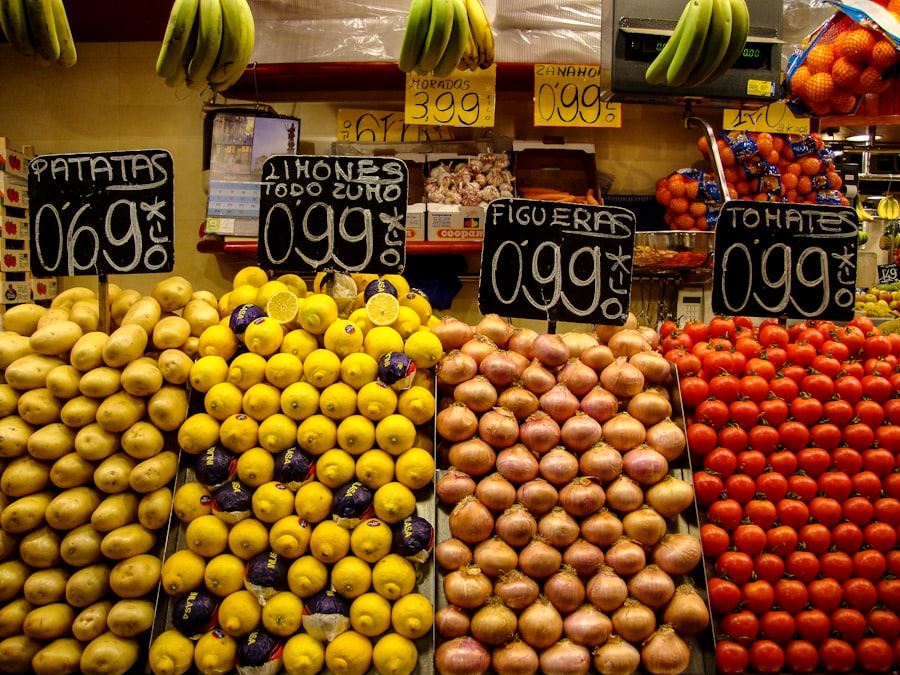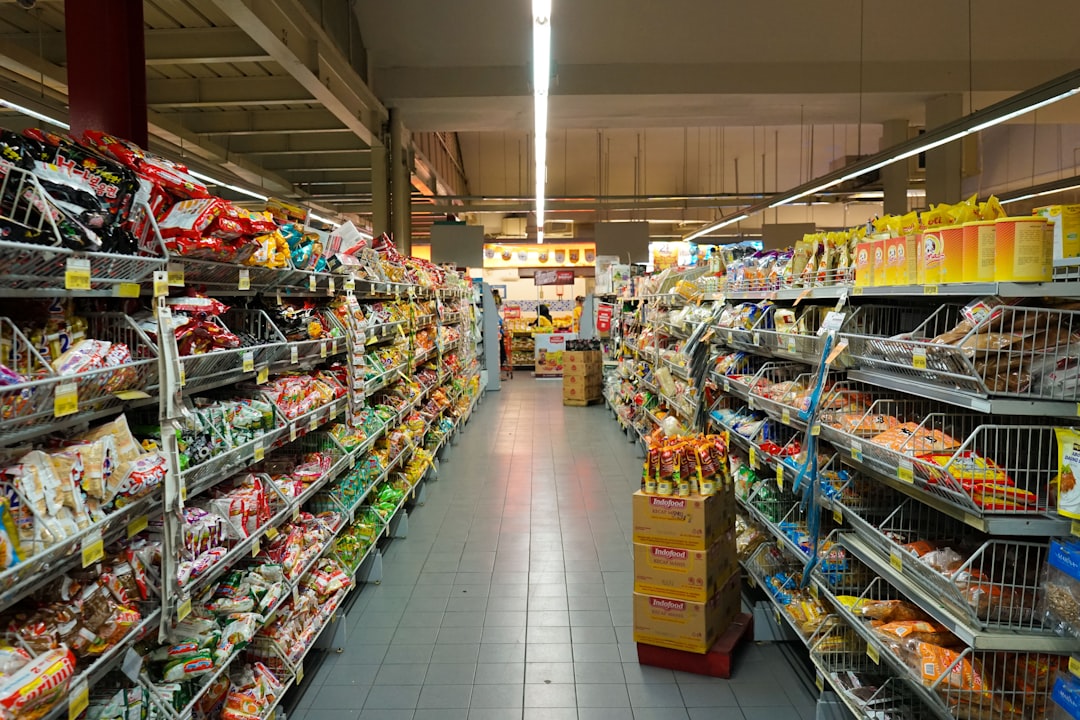As you step into your local grocery store, you may not realize the intricate web of technology that influences the prices of the items you see on the shelves. Artificial Intelligence (AI) has become a pivotal player in the retail landscape, particularly in grocery pricing strategies. The integration of AI into pricing mechanisms allows grocery stores to optimize their pricing models, ensuring they remain competitive while maximizing profits.
This technology analyzes vast amounts of data, enabling retailers to make informed decisions that cater to consumer behavior and market trends. The grocery industry is characterized by its dynamic nature, where prices can fluctuate based on various factors such as seasonality, demand, and competition. With AI, grocery stores can respond to these changes in real-time, adjusting prices to reflect current market conditions.
This not only enhances the shopping experience for customers but also helps retailers maintain their profit margins. As you navigate through the aisles, it’s fascinating to consider how AI is reshaping the way prices are set and how it ultimately affects your purchasing decisions.
Key Takeaways
- AI is revolutionizing the grocery store industry by enabling more efficient and dynamic pricing strategies.
- AI analyzes customer data to set prices based on factors such as purchasing behavior, demographics, and external market trends.
- AI predicts demand and supply to optimize inventory management and prevent stockouts or overstocking.
- Dynamic pricing strategies are enhanced by AI, allowing for real-time adjustments based on market conditions and customer behavior.
- AI impacts promotional pricing by identifying the most effective promotions and optimizing pricing to maximize sales and profits.
How AI Analyzes Customer Data to Set Prices
AI’s ability to analyze customer data is one of its most powerful features in grocery pricing. By collecting and processing data from various sources, including purchase history, customer demographics, and shopping patterns, AI can identify trends that inform pricing strategies. For instance, if a particular product is frequently purchased by a specific demographic during certain times of the year, AI can suggest price adjustments to capitalize on this trend.
This data-driven approach allows grocery stores to tailor their pricing to meet the needs and preferences of their customers. Moreover, AI can segment customers into different categories based on their buying behavior. This segmentation enables grocery stores to implement targeted pricing strategies that resonate with specific groups.
For example, if data shows that a segment of customers is particularly price-sensitive, the store can offer discounts or promotions on items that appeal to them. By leveraging customer data in this way, grocery stores can create a more personalized shopping experience while optimizing their pricing strategies for maximum effectiveness.
The Use of AI in Predicting Demand and Supply

Predicting demand and supply is another critical area where AI excels in grocery pricing. By analyzing historical sales data and external factors such as weather patterns, holidays, and local events, AI can forecast future demand for various products. This predictive capability allows grocery stores to adjust their inventory levels accordingly, ensuring they have enough stock to meet customer needs without overstocking items that may not sell.
For instance, if AI predicts an increase in demand for fresh produce during the summer months due to seasonal eating habits, grocery stores can adjust their purchasing strategies to ensure they have ample supply. Conversely, if demand for certain items is expected to decline, stores can reduce prices or run promotions to clear out inventory before it becomes unsellable. This proactive approach not only helps in managing supply effectively but also minimizes waste, contributing to a more sustainable grocery operation.
AI’s Role in Dynamic Pricing Strategies
| Metrics | Description |
|---|---|
| Price Optimization | AI can analyze market trends and customer behavior to optimize pricing for maximum profit. |
| Dynamic Pricing | AI can adjust prices in real-time based on demand, competition, and other factors to maximize revenue. |
| Competitor Analysis | AI can track competitor pricing and adjust strategies accordingly to stay competitive. |
| Customer Segmentation | AI can identify different customer segments and tailor pricing strategies to each segment. |
| Forecasting | AI can use historical data and predictive analytics to forecast demand and adjust pricing accordingly. |
Dynamic pricing is a strategy that allows grocery stores to adjust prices in real-time based on various factors such as demand fluctuations, competitor pricing, and inventory levels.
For example, if a competitor lowers their price on a popular item, AI can alert the store to make a similar adjustment to remain competitive.
This flexibility in pricing can lead to increased sales and customer satisfaction. As you shop, you may notice that prices for certain items change frequently; this is often a result of dynamic pricing strategies powered by AI. By responding quickly to market changes, grocery stores can attract more customers and drive sales while ensuring they remain profitable.
The Impact of AI on Promotional Pricing
Promotional pricing is another area where AI has made significant strides. By analyzing customer data and market trends, AI can help grocery stores design effective promotional campaigns that resonate with shoppers. For instance, if data indicates that certain products are more likely to be purchased together, AI can suggest bundling these items at a discounted price to encourage higher sales volumes.
Additionally, AI can optimize the timing and duration of promotions based on customer behavior. If analysis shows that customers are more likely to respond to promotions during specific days of the week or times of the year, grocery stores can schedule their promotions accordingly. This targeted approach not only maximizes the effectiveness of promotional pricing but also enhances the overall shopping experience for customers like you.
AI’s Contribution to Personalized Pricing

Personalized pricing is an emerging trend in retail that leverages AI to tailor prices based on individual customer preferences and behaviors. By analyzing your shopping history and preferences, grocery stores can offer personalized discounts or promotions that align with your buying habits. For example, if you frequently purchase organic products, you may receive special offers on those items, making your shopping experience more relevant and enjoyable.
This level of personalization not only benefits you as a consumer but also helps grocery stores build customer loyalty. When you feel valued through personalized offers, you are more likely to return to the store for future purchases. However, it’s essential for retailers to strike a balance between personalization and privacy concerns, ensuring that customer data is handled responsibly while still providing tailored experiences.
The Role of AI in Competitive Pricing Analysis
In a competitive market like grocery retail, understanding how your store’s prices compare to those of competitors is crucial for success. AI facilitates competitive pricing analysis by continuously monitoring competitor prices and market trends. This real-time analysis allows grocery stores to adjust their pricing strategies accordingly, ensuring they remain competitive without sacrificing profitability.
For instance, if a nearby store lowers its prices on essential items, AI can alert your grocery store’s management team to consider similar adjustments or promotional strategies. This proactive approach helps maintain customer loyalty and prevents shoppers from seeking better deals elsewhere. By leveraging AI for competitive pricing analysis, grocery stores can navigate the complexities of the market more effectively.
The Ethical Considerations of AI in Grocery Store Pricing
While the benefits of AI in grocery store pricing are substantial, ethical considerations must also be addressed. One significant concern is the potential for price discrimination based on customer data analysis.
It’s essential for grocery stores to ensure that their pricing practices are equitable and do not exploit vulnerable customers. Additionally, there are concerns about data privacy and security when it comes to collecting and analyzing customer information. As a shopper, you may be wary of how your data is being used and whether it is being protected adequately.
Grocery stores must prioritize ethical practices by being transparent about their data collection methods and ensuring robust security measures are in place to protect customer information.
The Challenges of Implementing AI in Pricing Strategies
Despite its advantages, implementing AI in grocery store pricing strategies comes with challenges. One significant hurdle is the initial investment required for technology infrastructure and training staff to use these systems effectively. Smaller grocery stores may find it particularly challenging to allocate resources for such investments compared to larger chains with more substantial budgets.
Moreover, integrating AI into existing systems can be complex and time-consuming. Grocery stores must ensure that their data sources are reliable and that staff members are adequately trained to interpret AI-generated insights. Overcoming these challenges requires careful planning and commitment from management teams to ensure successful implementation.
The Future of AI in Grocery Store Pricing
Looking ahead, the future of AI in grocery store pricing appears promising. As technology continues to evolve, we can expect even more sophisticated algorithms capable of analyzing vast amounts of data with greater accuracy. This advancement will enable grocery stores to refine their pricing strategies further and enhance the overall shopping experience for consumers like you.
Additionally, as consumers become more accustomed to personalized experiences driven by technology, grocery stores will likely invest more in AI solutions that cater specifically to individual preferences. This shift could lead to even more tailored promotions and pricing strategies that resonate with shoppers on a personal level.
The Benefits and Risks of AI in Setting Grocery Store Prices
In conclusion, the integration of AI into grocery store pricing strategies presents both benefits and risks. On one hand, AI enhances efficiency by enabling dynamic pricing, personalized offers, and competitive analysis that ultimately improve the shopping experience for consumers like you. On the other hand, ethical considerations surrounding data privacy and fairness must be addressed to ensure that these technologies are used responsibly.
As you continue your shopping journey, it’s essential to recognize the role that AI plays behind the scenes in shaping your experience at the grocery store. While there are challenges associated with implementing these technologies, the potential for improved pricing strategies and enhanced customer satisfaction makes it an exciting area for future development in the retail industry.
In recent years, the integration of artificial intelligence in the retail sector has revolutionized how grocery store prices are determined. AI algorithms analyze vast amounts of data, including consumer behavior, competitor pricing, and market trends, to optimize pricing strategies in real-time. This dynamic approach ensures that prices are competitive while maximizing profitability. For a deeper understanding of how AI is transforming pricing strategies in the retail industry, you can explore a related article on this topic by visiting How Wealth Grows. This resource provides insights into the technological advancements that are reshaping the economic landscape of grocery retail.
WATCH NOW! How Algorithms Quietly Bloat Your Grocery Bill; Here’s How to Fight Back
FAQs
What is AI pricing in grocery stores?
AI pricing in grocery stores refers to the use of artificial intelligence technology to set and adjust the prices of products in real-time based on various factors such as demand, competition, and inventory levels.
How does AI pricing work in grocery stores?
AI pricing in grocery stores works by analyzing large amounts of data, including sales history, customer behavior, and market trends, to determine the optimal pricing strategy for each product. This allows grocery stores to dynamically adjust prices to maximize profits and meet customer demand.
What are the benefits of AI pricing in grocery stores?
Some benefits of AI pricing in grocery stores include improved pricing accuracy, increased efficiency in pricing management, better understanding of customer behavior, and the ability to respond quickly to market changes.
Are there any potential drawbacks to AI pricing in grocery stores?
Potential drawbacks of AI pricing in grocery stores may include concerns about algorithm bias, the potential for price manipulation, and the impact on traditional pricing strategies. Additionally, there may be challenges in ensuring transparency and fairness in pricing practices.
How does AI pricing impact consumers?
AI pricing in grocery stores can impact consumers by potentially offering more competitive prices, personalized promotions, and a better understanding of their preferences. However, it may also lead to fluctuating prices and the need for consumers to stay informed about pricing changes.
